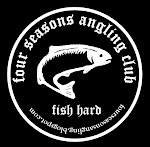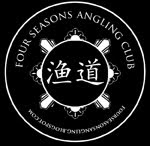A large portion of my family was getting together in Hawaii for my father in laws 70th birthday, and I could not pass on this chance to sneak away for a day (or two) to try my luck with meeting some Oio in the Hawaiian flats (Hawaiian word for bonefish: Oio). Many do not know that there are flats in Hawaii, and some are so unbelievably close that it’s wonderful once you discover where they are.
Wasn’t sure where or how to fish Hawaii, but fortunately, I hooked up with the friendly crew at Nervous Water Flyfishers (www.nervouswaterhawaii.com) and they pretty much provided all the information I needed. If you intend on fly fishing for bonefish in Hawaii, I strongly recommend setting up for a guided service with Nervous Waters, and to visit the shop for some locally relevant gear & flies. (believe me, I took a lot of flies I had bought and tied, but to my surprise the bonefish here seemed to be attracted to a very particular color & pattern). I stopped by the Nervous Water shop a day before my guided trip, and met with the owner Sean to hear about flyfishing in Hawaii, as well as get some help picking up a few of those Hawaiian patterns. Sean was both friendly and informative, and I look forward to seeing him again during my next trip out to Hawaii.
The day started with my guide Ed Tiamai, picking me up at the hotel about 7:30am, then we headed over to the flats meeting up with Nao Toyama, a super hardcore bonefish angler from Japan. Nao’s been flyfishing since he was eight, and he’s also an expert in Kyudo, Japanese Traditional Archery. I could tell he was hardcore about fishing as soon as I met him, and when he geared up ninja style to fish, there was a sense of seriousness in the air. Ed’s been fishing all his life in Hawaii and really does know the waters like the back of his hands. Ed’s been fishing big game Tuna, Marlin, and that sort but picked up fly fishing several years ago. Ed fishes hard and perhaps because of this, he proved to be an excellent guide. We went to two different spots throughout the day, and he taught me to cast in heavy Hawaiian winds to spotting bonefish in different settings/ times. It wasn’t easy casting accurately with the heavy winds, and even according to Ed he considered the winds that day a 8,9 out of 10max. It was pretty cool walking and spotting fish with Ed, and talking about different things in our lives.
Once in a while, Nao will show up from the waters to show us the picture of the barracuda he just caught, or to let us know about the bonefish that got away. Bonefish get spooked easy, but with the winds and noise on the water surface, I was hoping to get the fly close enough for the bonefish to notice. The morning passed on without much luck for me, and although I was finally starting to see all the fish Ed was spotting for me, I had trouble getting the fly accurately in front of it. We moved to a slightly more sheltered spot after lunch, and here is where I first met my first bone fish. I’ve fished different species of fish for some years now, but when the first bonefish took my fly, I understood exactly why people consider this one of the top sporting fish. Ed told me to not “cup the reel” in concern about running out of backing, and I experienced why people do that. The strike was somewhat blunt, but when bonefish started to run, it ran hard and long. Even with the firm drag, it took out all of the fly line and I was into the backing after the 3rd run. That sweet sound of the reel cranking… I brought the fish in and was surprised at the size. From the fight, I thought it would have been slightly larger. It was about a 3.5 pounder, and I was happy to catch my first bonefish ever. After that I had a few takes, but when the fish ran and took the line into the rocks, I lost them. After a few I could tell which ones were the larger fish, with the scream of the reel. All in all, it was a perfect day for me. The next day, Ed broke his 9wt rod on a 8 pounder, and still managed to land the fish. I think it is certain that bonefish will become a regular on the list of fish I seek each year.
The bonefish is the type species of the Albulidae, or bonefishes. It is amphidromous, living in inshore tropical waters, moving onto shallow tidal flats to feed with the incoming tide, and retreating to deeper water as the tide ebbs. Juvenile bonefish may be observed in large shoals of like-sized individuals with large mature fish swimming in smaller groups or in pairs. Bonefish are considered to be among the world's premier game fish and are highly sought after by anglers. Although it is caught for sport its flesh is not considered particularly good to eat.






















































































